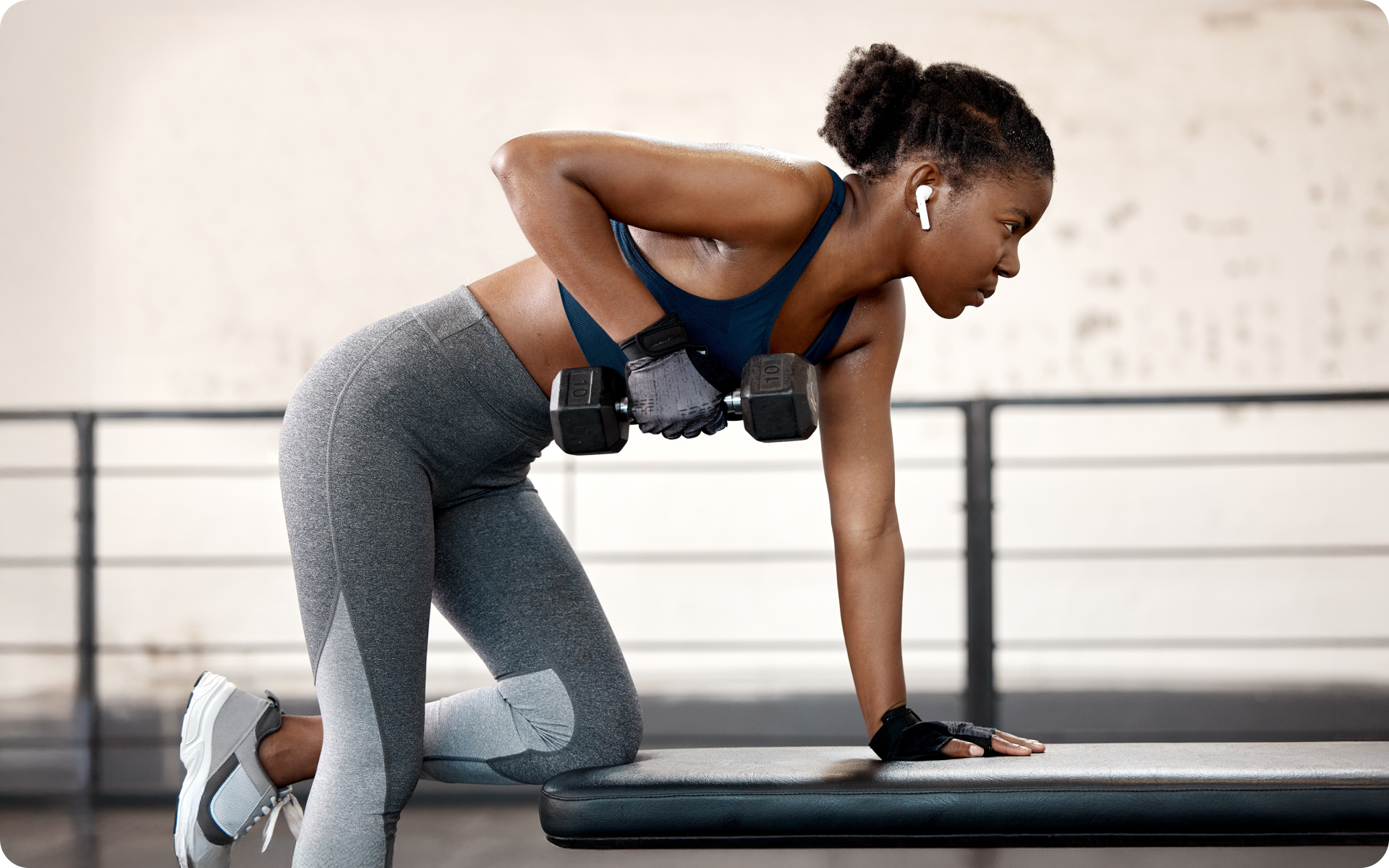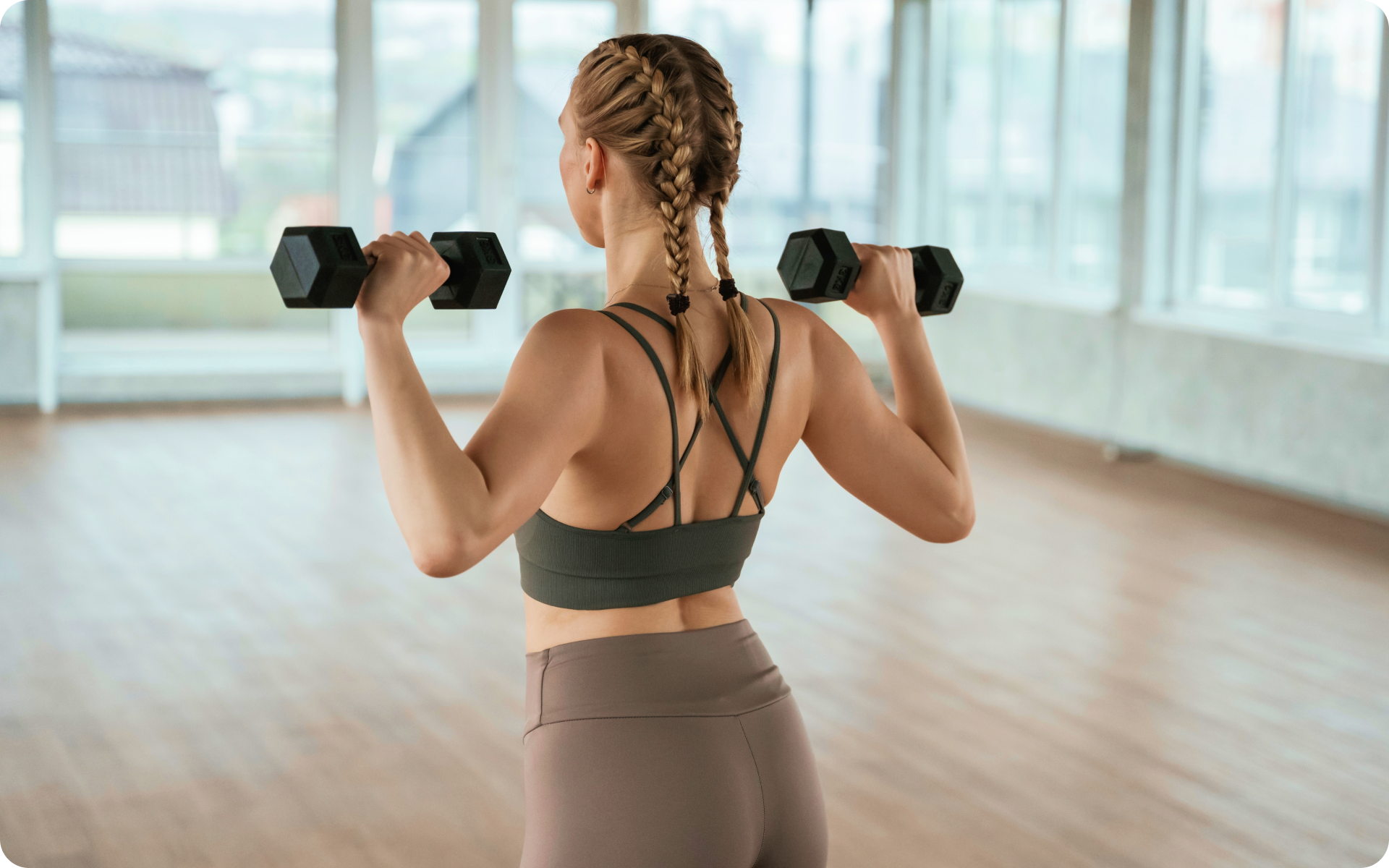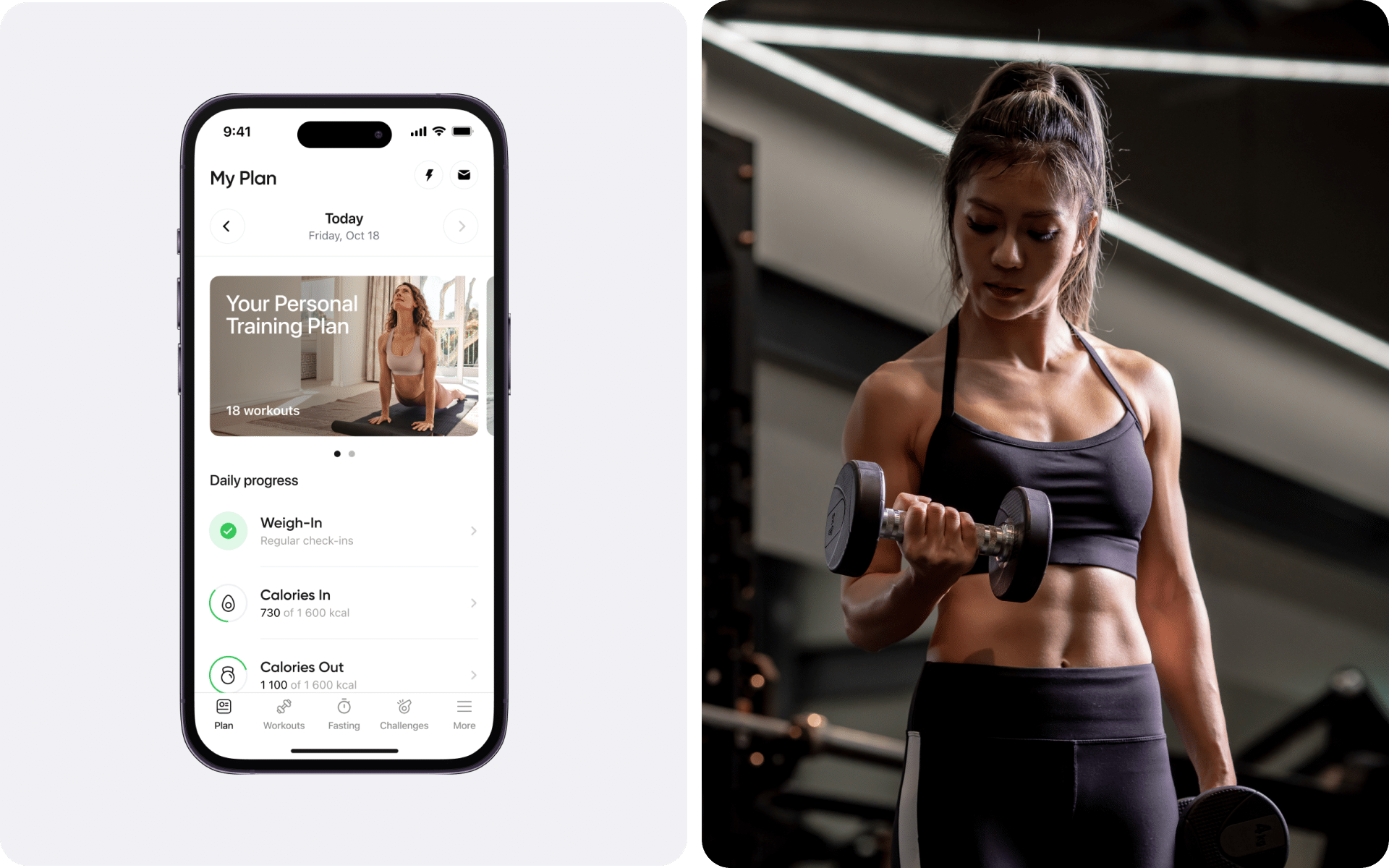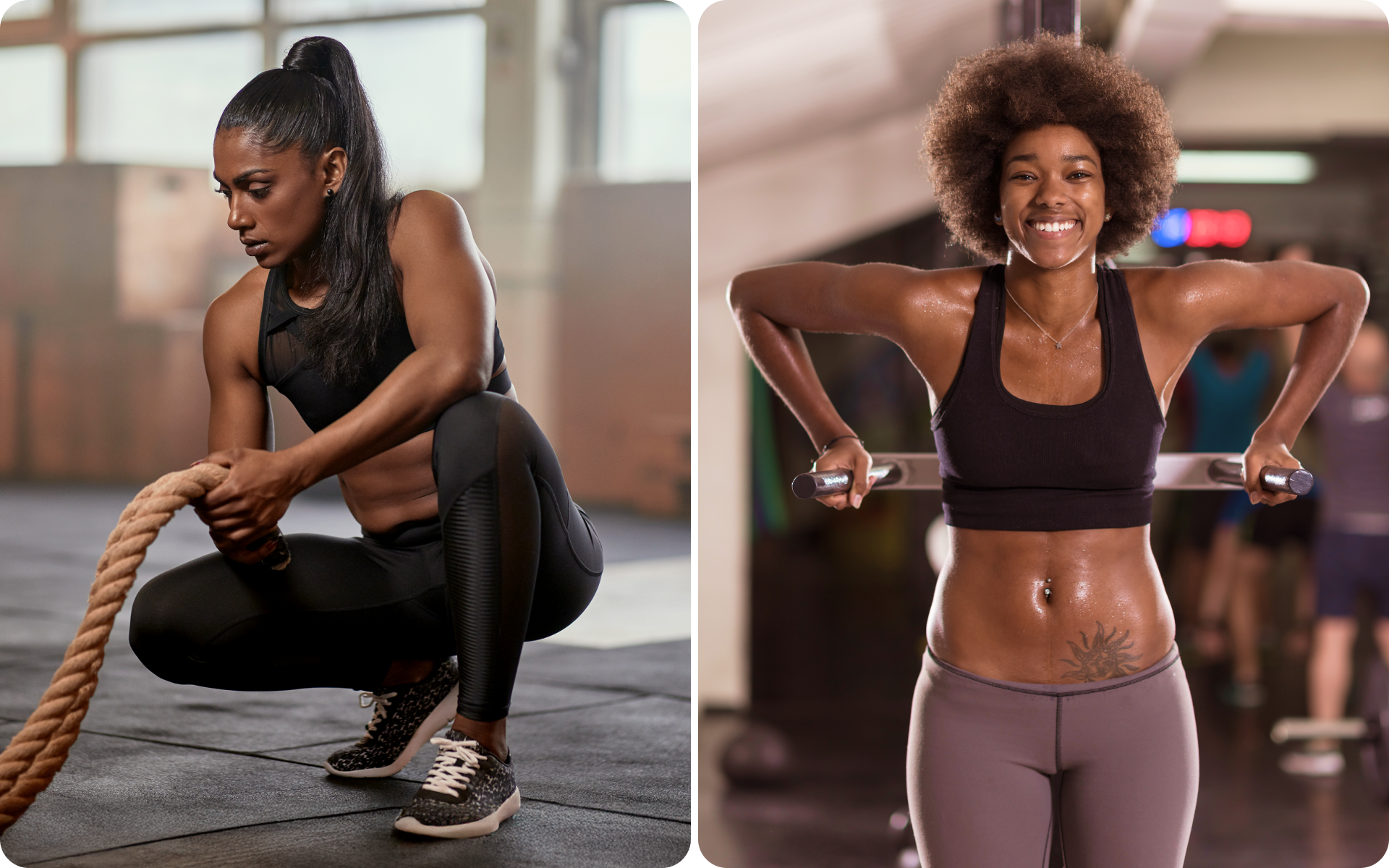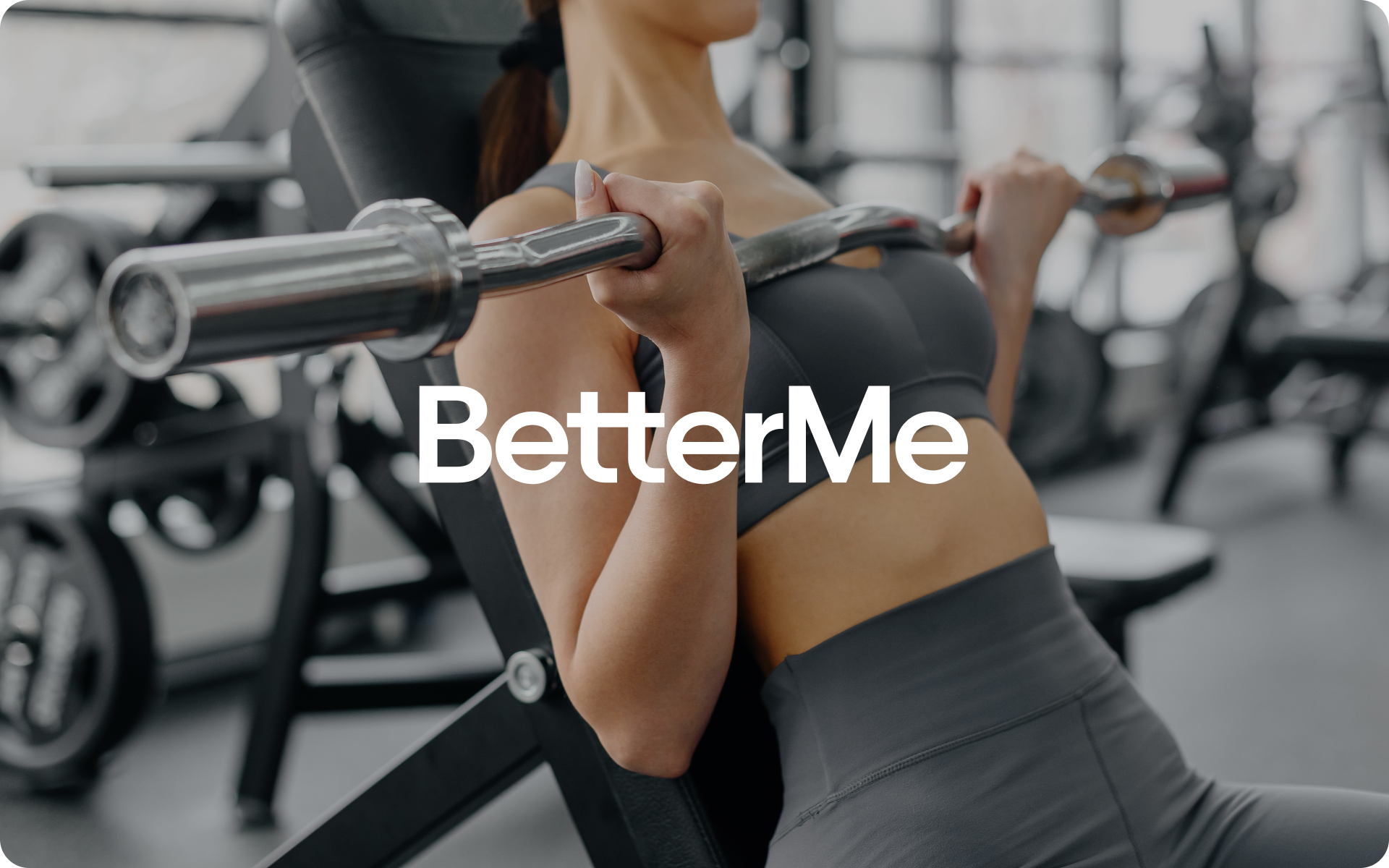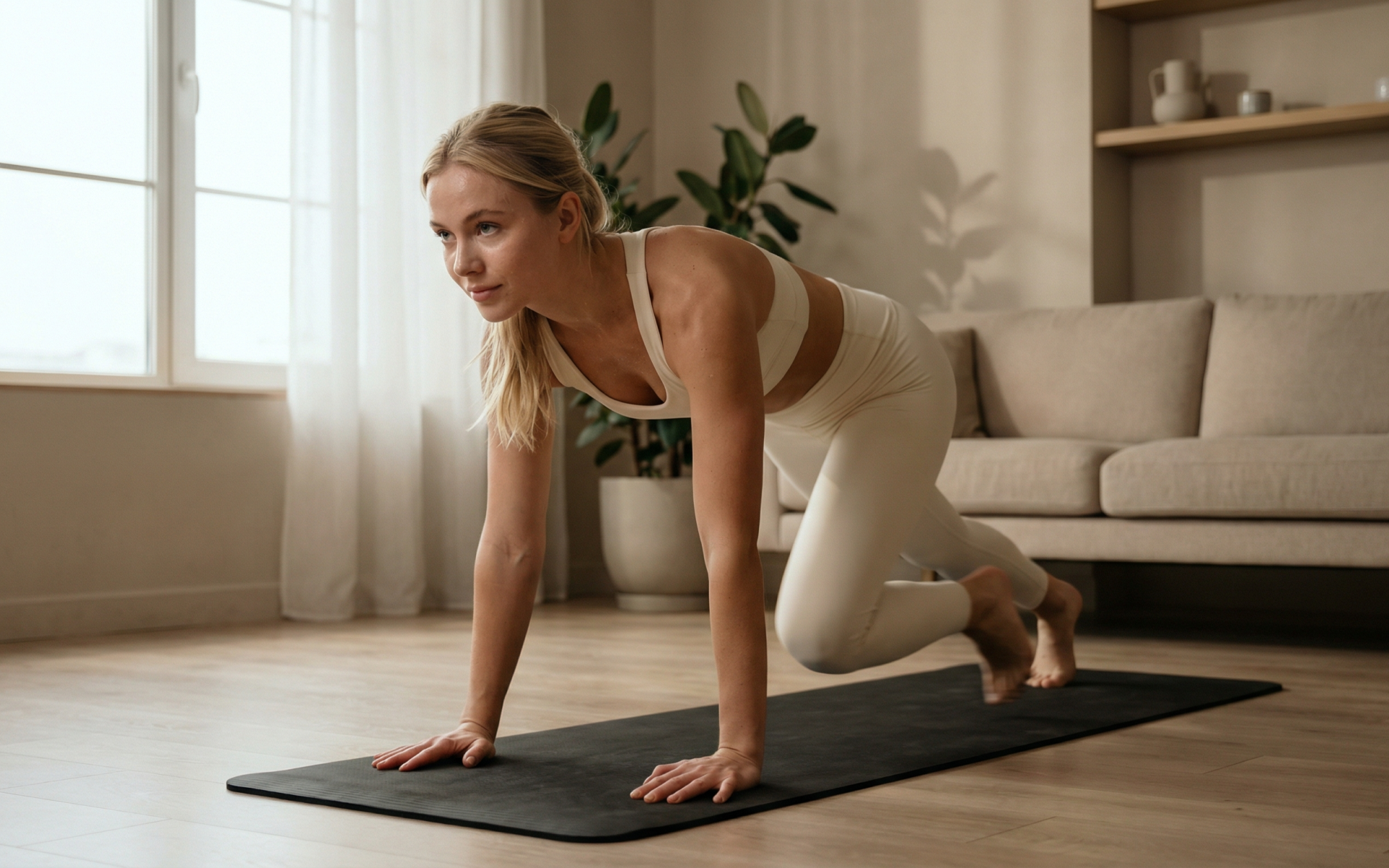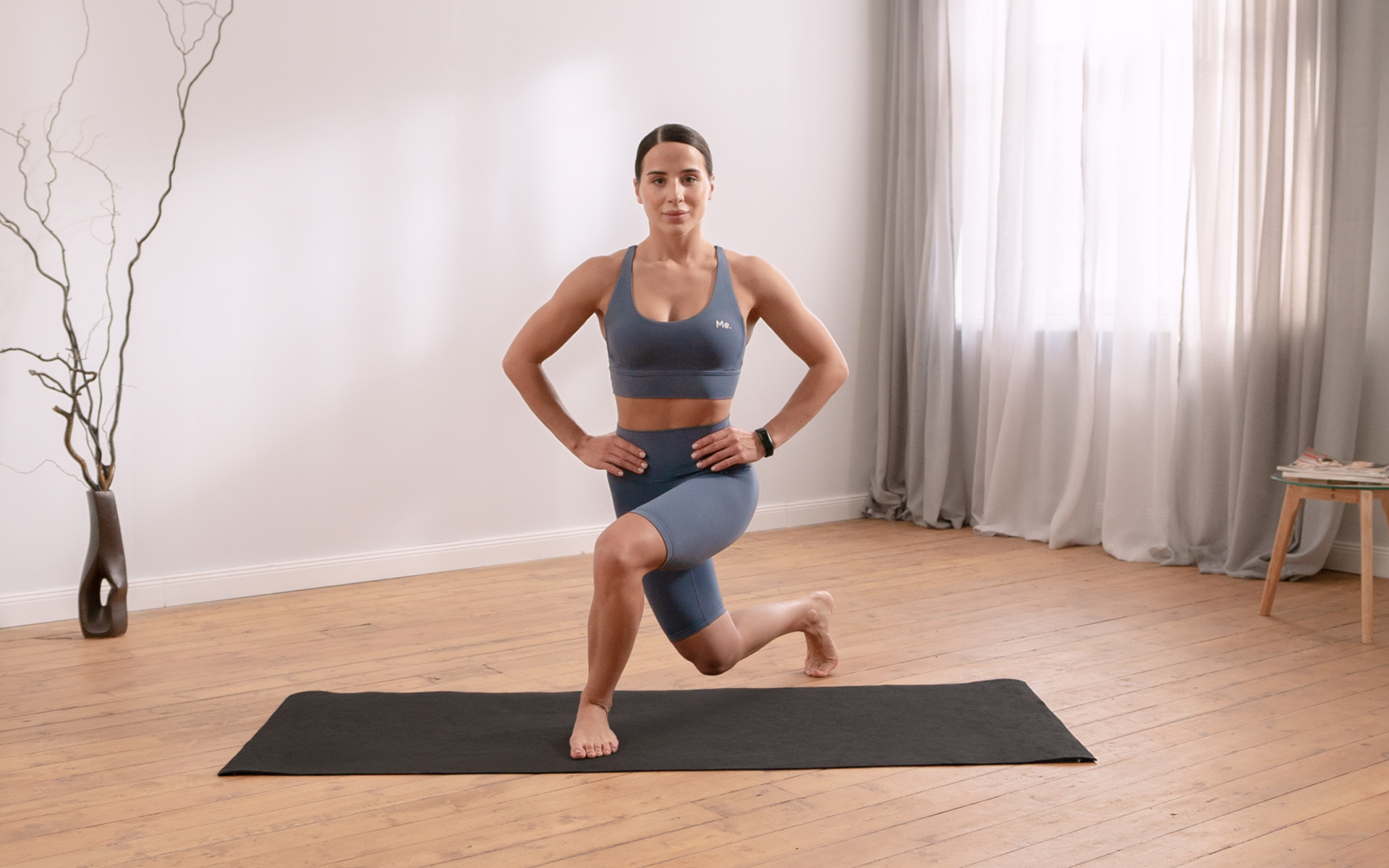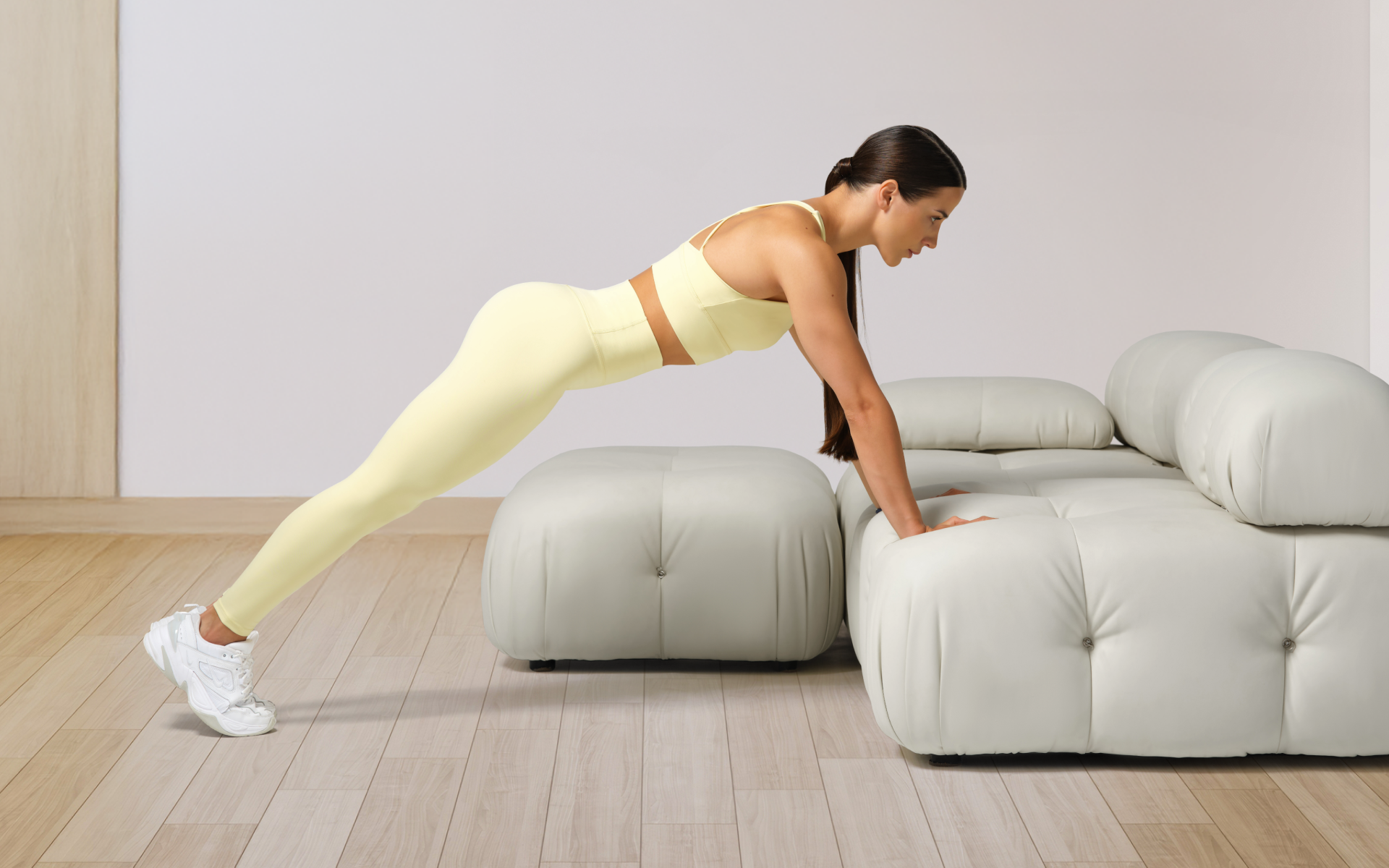When it comes to working out, especially for muscle growth, many people are convinced that going to the gym five, six, or even seven days a week is the way to go. While there is nothing essentially wrong with this, what would you say if we told you that you can achieve those massive gains of your dreams by only doing a 3-day push-pull workout?
It sounds a little unbelievable right? Just like losing weight, building muscle takes time and dedication – time that many people who are working or even studying feel like they do not have. This is where the 3-day push-pull workout routine comes in.
This exercise plan works with you to allow you to build your muscles and is also well distributed throughout the week, giving you time to recover and get on with your responsibilities, without carving out time daily to head to the gym.
What Is a 3-Day Push-Pull Workout?
Also known as a 3-day push-pull-legs workout, this is a split routine that breaks up your training sessions into different body parts/muscle groups to be exercised on 3 different days of the week. These routines have been shown to increase how many calories you can burn in a session and they’ve also been praised for increased muscle mass in bodybuilders (9).
Pull exercises
These are exercises that involve concentric contractions. Concentric contraction occurs when the total length of the muscle shortens as tension is produced. This tension and shortening of the muscles usually generates enough force to move an object (5, 4). In simpler terms, any exercise that involves the pulling action can be classified as a pull exercise. Exercises such as bicep curls, dumbbell shrugs, dumbbell rows, and pull-ups are all upper-body pull exercises. They generally target your back, biceps, and forearms.
Push exercises
These are the opposite of pull exercises and they involve eccentric muscle contractions. Eccentric contractions – also known as negatives, braking contractions, or negative work – are a type of contraction where the muscle lengthens as it contracts and they occur when a muscle opposes a stronger force and reverses its initial trajectory (7).
In layman’s terms, push exercises are those that involve the pushing motion/action. Push-ups, dumbbell shoulder press, bench press, and tricep dips are some examples of upper-body push exercises. They target the muscles in your chest, shoulders, and triceps.
Betterme will keep you laser-focused on your weight loss journey! Nutrient-packed meal plans, fat-blasting workouts, galvanizing challenges and much more. Try using the app and see for yourself!
The Best 3-Day Push-Pull Workout Routine Sample
This is a good 3-day push-pull women or men routine. Make sure you adjust the plan to suit your capabilities by reducing or increasing the sets/reps.
| DAY | WORKOUT TYPE | EXERCISE | SETS | REPS |
|---|---|---|---|---|
| Monday | Push | Dumbbell Chest Press Triceps Extensions Push-ups Lateral Dumbbell Raises Seated Shoulder Press Barbell Front Squats Triceps Dips | 3 2 3 3 4 5 3 | 12 15 10 12 per side 8 5 12 |
| Tuesday | OFF | OFF | OFF | OFF |
| Wednesday | Pull | Pull-ups Lateral Pull Downs Hammer Curls Dumbbell Rows Barbell Bent Over Rows Dumbbell Shrugs Reverse Fly | 3 3 5 4 3 2 3 | 10 12 8 per side 10 per side 12 15 12 |
| Thursday | OFF | OFF | OFF | OFF |
| Friday | Legs | Squats Deadlifts Standing Calf Raises Lunges Bulgarian Split Squats Barbell Hip Thrusts | 3 3 3 3 4 5 | 12 12 Till exhaustion 10 8 per leg 6 |
Is 3 Exercises Enough for Push Day?
It depends on your level of expertise in the gym. As a beginner, it’s best to do one exercise per muscle group in the initial stages.
The reasoning behind this is that when starting out, most beginners don’t have a good understanding of exercise form and are more likely to injure themselves, particularly when using weights. To avoid this, doing one exercise per muscle group is safer as it helps you learn proper form.
Once you’re more familiar with the gym and have proper form, you can increase the number of exercises per muscle group. According to the National Academy of Sports Medicine, those who wish to grow muscle mass, strength, and endurance should aim to do 2 to 4 exercises per body part (10).
Please note that when it comes to the number of sets per exercise, research has shown that doing 1, 3, or even 5 sets per workout will result in relatively similar strength gains in an individual. However, those who engage in more sets per exercise will succeed in growing bigger (not necessarily stronger) muscles faster than those who do fewer sets (12).
Can You Do Push-Pull 3 Times a Week?
Yes, you can. In addition to helping you grow muscle mass and muscle strength, another main benefit of this workout is that it allows you to effectively work your entire body just three times a week. For those who are short on time, such a routine works perfectly.
This routine can also be done 6 times a week, by repeating the 3-day push-pull workout twice. However, such a routine should be left for more advanced exercisers.
It’s important to remember that you need at least 48 to 72-hour rest periods between workout sessions (8). As a beginner, working out 6 days a week could prove to be too much for your body and muscles, leading to overtraining syndrome (11).
Read more: Push Day Workout: Your Blueprint to Powerful Chest, Shoulder, and Tricep Muscles
Are Push-Pull Workouts Effective?
When it comes to push-pull routines, the 3-day push-pull workout plan is just one of the many varieties of exercise routines that exist. So what makes this push-pull legs workout 3-day plan better than other types?
It Reduces Overlap Between Different Muscle Groups
Imagine training your chest or back the day after you just trained your arms. Or working out your core after you just trained your legs. These muscle combinations overlap and having a routine that allows for overlapping will have you feeling sore for most of the week.
It’s Less Time Consuming
Unless you’re doing this split twice a week, you only have to be in the gym three out of the seven days of the week. For anyone who has a relatively busy life or doesn’t enjoy exercising, this is the perfect way to work on remaining fit and healthy without having to dedicate all your free time to the gym. What’s not to like about that?
Creates Muscle Balance/Symmetry
Sometimes when we do full-body routines, we tend to work more muscles than others. Some people enjoy lower-body workouts and will dedicate more time to leg workouts and overlook upper-body workouts, while those who love upper-body workouts may end up overlooking leg days.
However, with the 3-day push-pull workout routine, you get to work out all the major muscle groups at least once a week. This ensures no muscle group is over- or under-exercised, which will help create a more balanced physique.
Increased Rest Days
As the name suggests, the push-pull legs workout 3-day plan only has you exercising for 3 days, leaving you with 4 days to rest, which greatly reduces soreness. Another fact to note is that for your muscles to increase in size and get stronger, you need to give them ample time to recover.
Remember that working out causes tears in your muscle fibers, which are usually repaired when you rest. This routine stands out above the rest as it gives you 24 hours between each workout session, which gives you ample time to recover. It’s important to note that research has suggested that your muscles require anywhere between 48 and 72 hours to fully recover from exercise (1, 14).
Prevents Overtraining
This goes back to the point of increased rest days and the reduced overlap in muscle training. The more you rest, the less you overwork your muscles and the more you reduce the risk of injuring yourself while in the gym.
Can Be Done by Anyone
While push-pull workouts are often usually left to more advanced gym-goers, beginners can also participate and benefit from them.
Please note that the National Strength and Conditioning Association suggests that beginners with less than 6 months of training should alternate training days with rest days to allow for a maximum of 3 training days per week (6).
On the other hand, intermediate and advanced resistance trainers (6 months to 2 years of training or more than 2 years of training, respectively) can train up to six times per week with one rest day separating each split (6).
Yanking yourself back in shape has never been so easy with our game-changing fitness app! Start transforming your life with BetterMe!
Is a 3-day Full-Body Workout Better Than a 3-day Push-Pull Leg Workout?
That depends. It cannot be denied that a 3-day push-pull workout has its advantages, particularly in relation to building muscles, but sometimes a full-body workout can be better than this split workout routine. Here are some reasons why:
Full-Body Workouts Are Better for Weight Loss
As previously mentioned, the 3-day push-pull workout plan is a split routine that makes you exercise different muscle groups on different days of the week. On the other hand, a 3-day full-body circuit means that you’re working out all muscle groups 3 days a week. It comes down to simple math – a full-body workout works more muscles at once, which equates to more calories burned and ultimately leads to more weight loss over time.
Full-Body Workouts Are More Flexible
When it comes to a 3-day full-body routine, you can mix up whichever days you choose to work out with little to no repercussions. However, a 3-day push-pull workout routine requires more discipline. Skipping a session will throw off your routine, but depending on your split, it could see you having to wait a full week before getting another chance to work out a specific muscle group.
Full-Body Workouts Are More Time Efficient
Split workouts generally require a lot of time to complete and do well, but a full-body workout can be done in as little as 30 minutes and will give you great results.
Full-Body Workouts Don’t Require a Gym
While split workouts can be done with just body weight, they produce better results when they’re done with free weights or gym machines. On the other hand, full-body workouts are often done without weights or the gym – cardio exercises such as walking and running need no equipment and yet they produce fantastic weight loss results.
Full-Body Workouts Are More Fun
You have a never-ending variety of exercises you can do and will rarely ever have to do the same thing over and over, unless you want to. Split workouts are often limited to the same type of workout repeated over and over.
The fun of split workouts comes from the challenge of how many reps you can do or how heavy you can lift, showing why a push-pull workout 3-day split bodybuilding plan is incredibly effective.
Is a 3-Day Push-Pull Leg Workout Really Not the Best Way to Build Muscle?
When it comes to the 3-day push-pull workout plan, we believe this routine is quite effective, particularly for beginners to bodybuilding. As we’ve outlined above, the routine is quite easy to follow, prevents overtraining, and allows for increased rest days, all factors which are good for muscle growth.
Read more: Push Day Workout: A Comprehensive Guide for Upper Body Gains
FAQs
How long should a push-pull workout be?
There’s no general rule regarding how long a workout session should be. However, the CDC advises you to exercise for at least 30 minutes a day (2) and most workout programs usually last between 30 and 60 minutes.
Therefore, we could say that your 3-day push-pull workout sessions should last approximately 60 minutes (warmup + actual workout session + cool-down). Please make sure to listen to your body and don’t push beyond your capabilities as this could lead to injury.
Are lat raises push or pull?
Lateral raises are classified as a push workout. If you’re dealing with cellulite on your arms, lateral raises can help with fat reduction and muscle toning, which could help minimize the appearance of cellulite.
That being said, please note that there is no known effective treatment for cellulite, but some things like exercise and other noninvasive to minimally invasive procedures can help reduce the appearance for a short while (3).
Is it normal to feel sleepy after a workout?
Yes, it is. Exercising is a physical activity that makes you tired and more often than not, the body’s response to fatigue is sleepiness. Exercise causes both central and peripheral fatigue (fatigue to the central nervous system and the muscles, respectively) and this can lead to sleepiness after a workout (13).
How many calories do burpees burn?
As an individual’s calorie burn is determined by several factors, including their weight, height, sex, and activity levels, it’s difficult to say how many calories burpees burn. However, you can use an online calorie calculator or the Harris-Benedict formula to manually calculate how many calories you burn doing burpees.
The Bottom Line
If you’re new to bodybuilding, we suggest you try this 3-day push-pull workout plan as it’s bound to work exceedingly well for your goal. However, if you’re looking to lose some excess weight, this plan may not work for you just yet – work toward weight loss first then come back to this and work on those massive gains. Remember to also eat the right foods and stay hydrated.
DISCLAIMER:
This article is intended for general informational purposes only and does not serve to address individual circumstances. It is not a substitute for professional advice or help and should not be relied on for making any kind of decision-making. Any action taken as a direct or indirect result of the information in this article is entirely at your own risk and is your sole responsibility.
BetterMe, its content staff, and its medical advisors accept no responsibility for inaccuracies, errors, misstatements, inconsistencies, or omissions and specifically disclaim any liability, loss or risk, personal, professional or otherwise, which may be incurred as a consequence, directly or indirectly, of the use and/or application of any content.
You should always seek the advice of your physician or other qualified health provider with any questions you may have regarding a medical condition or your specific situation. Never disregard professional medical advice or delay seeking it because of BetterMe content. If you suspect or think you may have a medical emergency, call your doctor.
SOURCES
- A series of studies-a practical protocol for testing muscular endurance recovery (2003, pubmed.ncbi.nlm.nih.gov)
- Benefits of Physical Activity (2024, cdc.gov)
- Cellulite: Current Understanding and Treatment (2023, ncbi.nlm.nih.gov)
- Concentric and Eccentric: Muscle Contraction or Exercise? (2013, ncbi.nlm.nih.gov)
- Concentric Muscle Contraction (2019, sciencedirect.com)
- Determination of Resistance Training Frequency (2017, nsca.com)
- Eccentric exercise: mechanisms and effects when used as training regime or training adjunct (2014, journals.physiology.org)
- Effects of Consecutive Versus Non-consecutive Days of Resistance Training on Strength, Body Composition, and Red Blood Cells (2018, ncbi.nlm.nih.gov)
- Effects of Resistance Training Frequency on Measures of Muscle Hypertrophy: A Systematic Review and Meta-Analysis (2016, pubmed.ncbi.nlm.nih.gov)
- MUSCULAR DEVELOPMENT FOR BODYBUILDERS (n.d., blog.nasm.org)
- Overtraining Syndrome (2012, ncbi.nlm.nih.gov)
- Resistance Training Volume Enhances Muscle Hypertrophy but Not Strength in Trained Men (2019, ncbi.nlm.nih.gov)
- Should I Nap Right After My Workout? (2023, sleepfoundation.org)
- The effects of exercise-induced muscle damage on cycling time-trial performance (2011, pubmed.ncbi.nlm.nih.gov)

